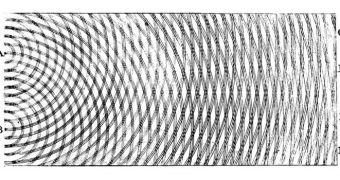Ever since the fist science-fiction books and movies came out, people have been fascinated with the idea of traveling faster than the speed of light. One could say that it's just a psychological thing, brought forth by theories stating that nothing in the Universe can travel faster than the speed of light. But, over the years, scientists and physicists have attempted early calculations and theories, to test if it's indeed possible to achieve or exceed “warp speed.” A new approach, now devised by Baylor University experts, may hold the key to making fiction a reality, ScienceDaily reports.
Associate professor of physics Dr. Gerald Cleaver and post-doctoral student Dr. Richard Obousy believe that they may have discovered a way of traveling faster than the speed of light, without actually breaking just about every law of physics discovered by man. They hypothesize that humans could devise a way of controlling the three dimensions around a spacecraft, through the use of high amounts of energy, which in turn would create a protective bubble around the vessel, protecting it from all sorts of paradoxes and violations it would otherwise trigger.
One way of constructing the bubble, they say, would be by generating dark energy, and, in order to do this, they believe manipulating the 11-dimensions would be the only solution. According to Cleaver, positive dark energy is the force that drives the expansion of the Universe, and that, just after the Big Bang, it was the main engine that made the Cosmos inflate, faster than the speed which light came to have afterwards. The team believes that the energy also influences the flow of time, as the Universe expands at a speed soon-to-be-determined by Hubble's Constant.
“Think of it like a surfer riding a wave. The ship would be pushed by the bubble and the bubble would be traveling faster than the speed of light,” explains the expert, who, together with Obousy, co-authored a paper detailing the new theory. The study was published in a recent issue of the Journal of the British Interplanetary Society. The duo also reports that their method relies on the Alcubierre drive, which proposes that the very fabric of space can be expanded into a bubble behind the spacecraft, and shrunk in front of it. The resulting differences would propel the ship forward faster than the speed of light.
The hitch in their approach, the team admits, is the enormous amounts of energy that would be required to influence the 11-dimensions. Estimative calculations place that amount as being roughly equivalent to the entire mass of Jupiter being converted into positive dark energy. “That is an enormous amount of energy. We are still a very long way off before we could create something to harness that type of energy,” Cleaver concludes.

 14 DAY TRIAL //
14 DAY TRIAL //